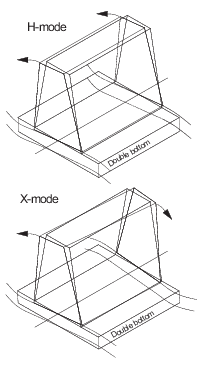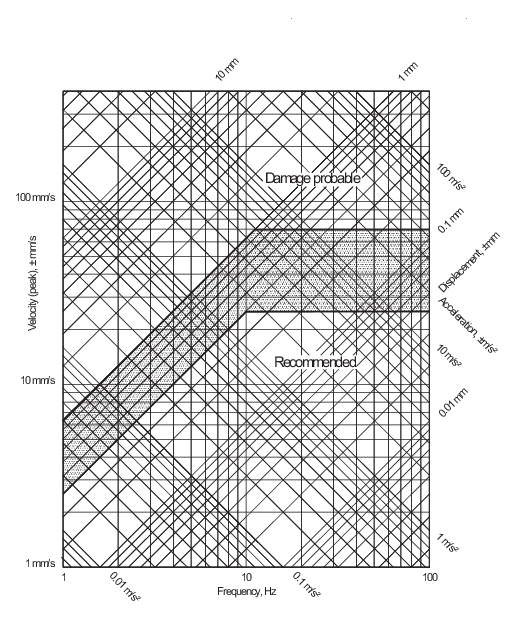3.1
Scope
Assessment of vibration severity on rigid and flexibly mounted
reciprocating machines above 20 kW. The frequency range considered
is 2 to 100 Hz.
3.2
Vibration
severity
The severity of reciprocating machinery vibrations is defined
by the peak vibration amplitudes.
3.3
Position
and direction
Measurements are to be taken on top of the machine frame (entablature)
in three mutually orthogonal directions referred to the shaft axis.
The assessment criteria should be applied to the position and direction
of the maximum vibration amplitude. The principal modes of vibration
of slow speed diesel engines are shown in
Figure 7.3.1 Vibration modes of slow speed diesel engines
.

Figure 7.3.1 Vibration modes of slow speed diesel engines

Figure 7.3.2 Reciprocating machinery
3.4
Assessment
Overall peak amplitudes for vibrations in the frequency range
2 to 100 Hz should be less than each of the following values:
| • displacement
|
± 0.4 mm
|
| • velocity
|
± 25 mm/s
|
| • acceleration
|
± 40 m/s2.
|
3.5 The assessment
of higher vibration levels should be based on a narrowband frequency
analysis referred to
Figure 7.3.2 Reciprocating machinery
.
The assessment levels given in
Figure 7.3.2 Reciprocating machinery
apply independently to each measurement. Displacement
limits below 15 Hz only apply to rigidly mounted machines.Resiliently
mounted reciprocating machines.
The levels given in
Figure 7.3.2 Reciprocating machinery
are
applicable for the normal running condition. Large displacements are
normal during starting and stopping when the machine speed coincides
with the natural frequency of the resilient mounts. The Guidance Notes
do not apply to this transitory condition.